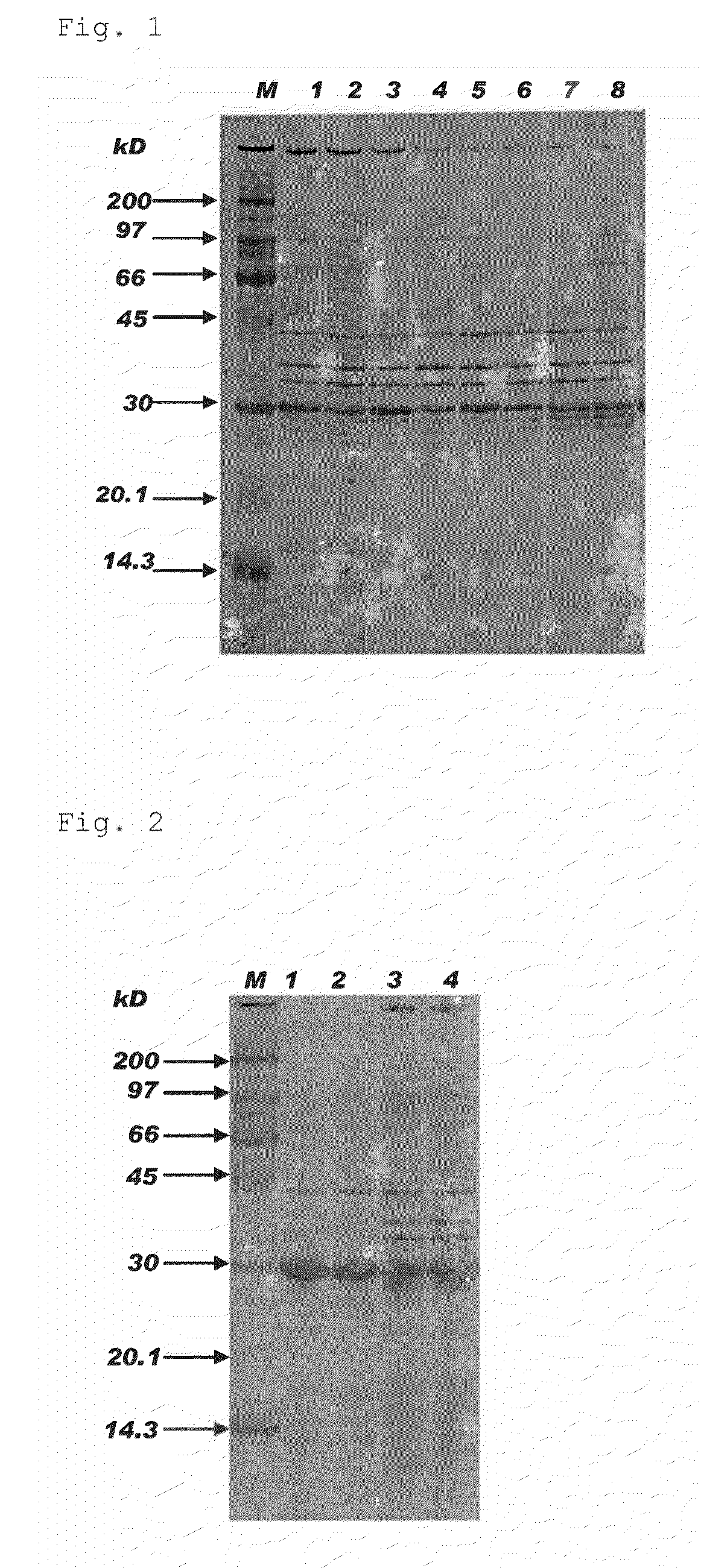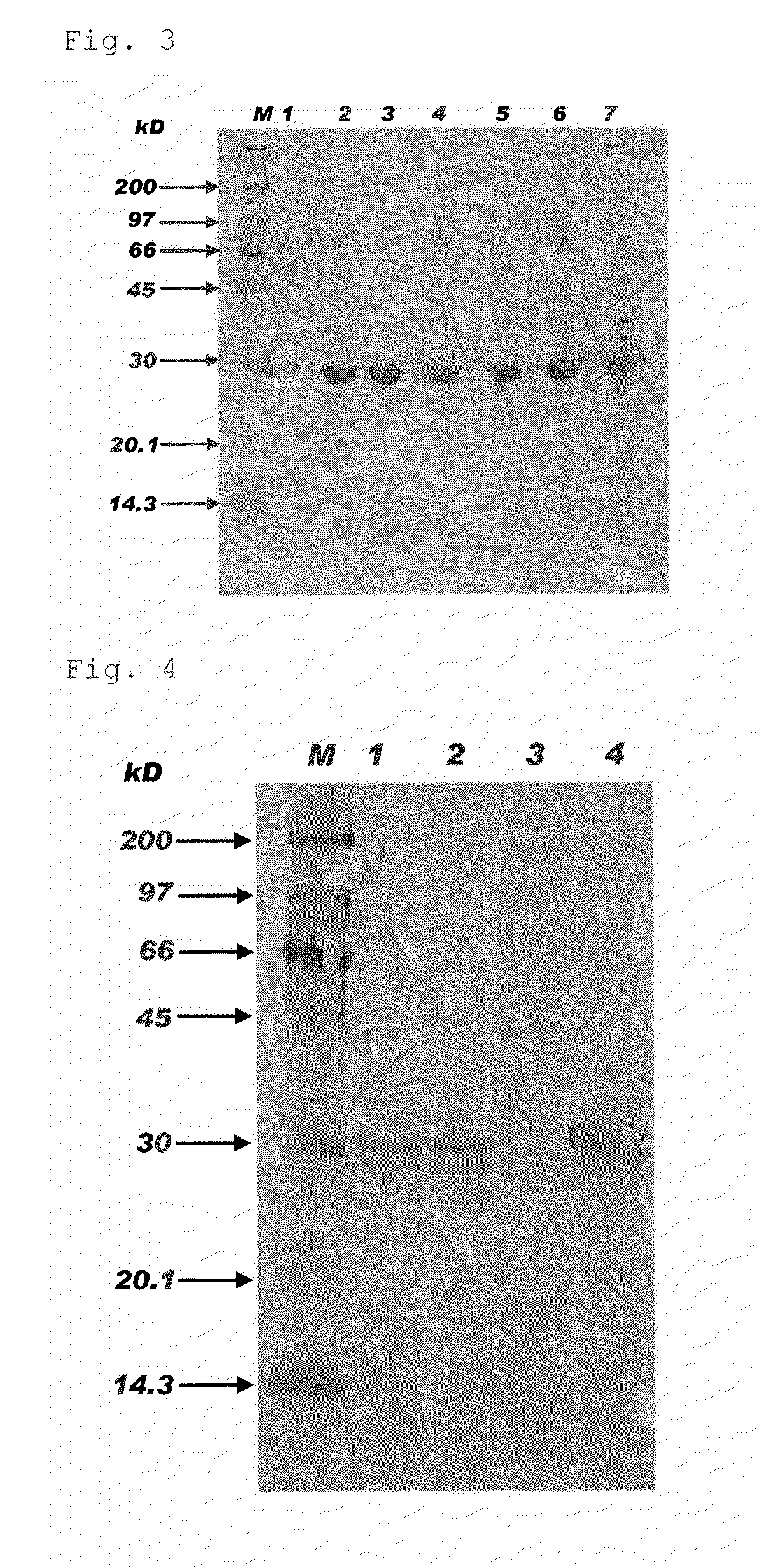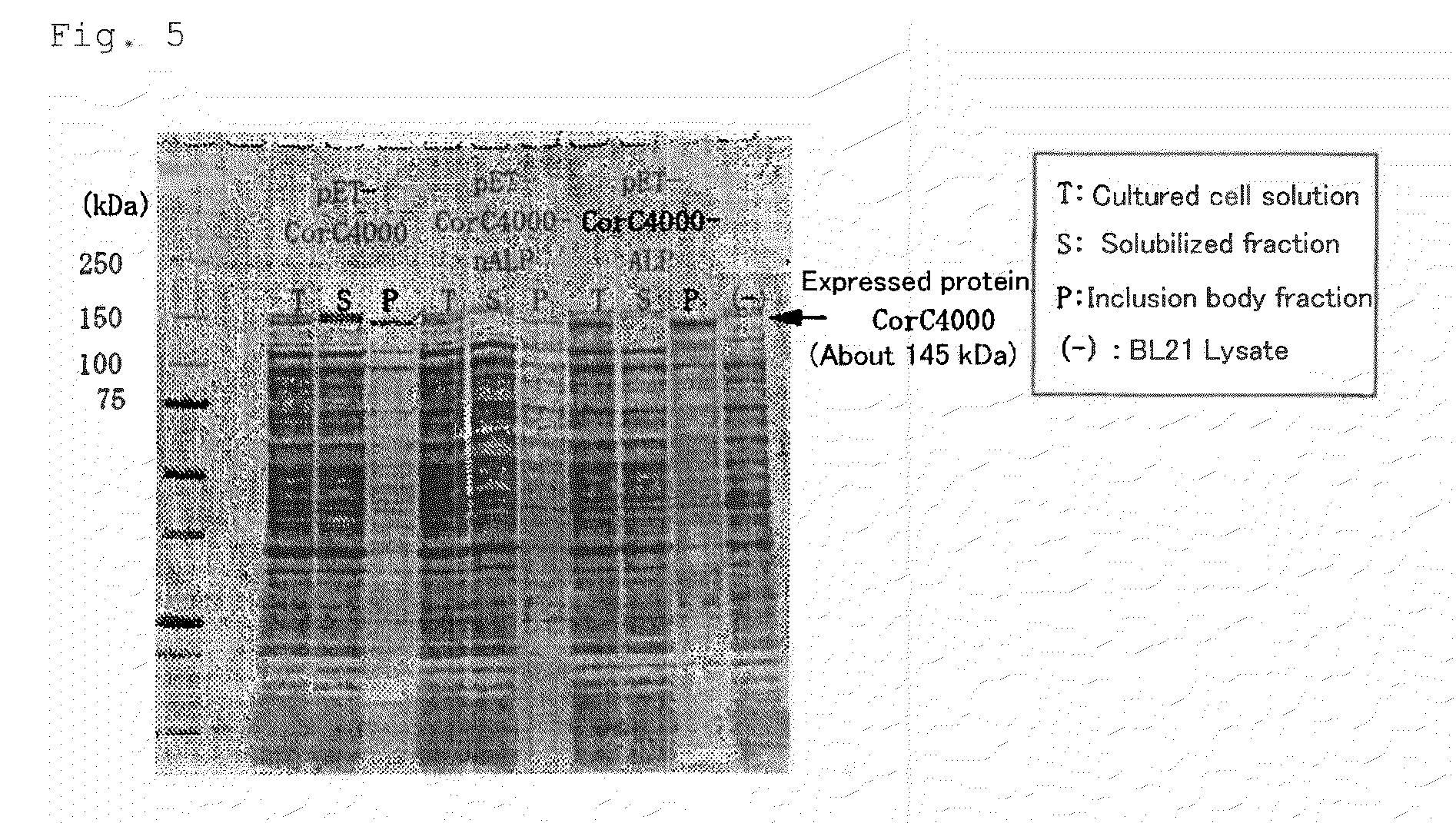Process for preparing inclusion body-forming protein
a protein and inclusion technology, applied in the field of process, can solve the problems of not being applicable to an expression system with living cells such as i>e. coli, and no known approach for expressing a protein of interest in gram-negative cells, and achieve the effects of improving the ratio of retaining an expression plasmid, improving responsiveness, and improving the expression level of a protein of interes
- Summary
- Abstract
- Description
- Claims
- Application Information
AI Technical Summary
Benefits of technology
Problems solved by technology
Method used
Image
Examples
example 1
Construction of proMMP-7 Expression Vector (pETMMP7) having APSP
[0080]proMMP-7 gene was amplified from kidney cDNA library (HumanMTC Panel I, Catalog#: K1420-1, BD) by PCR using primers P1 (SEQ ID NO: 2) and P2 (SEQ ID NO: 3). The amplified DNA was inserted into a cloning vector (pCRII-TOPO, Invitrogen) and the obtained DNA was sequenced. For nucleotide sequencing, a DNA sequencer was used. Homology search was conducted between said nucleotide sequence and the nucleotide sequence of proMMP-7 registered on database (Accession Numbers: NM002423) to obtain a plasmid (pCRproMMP-7) where proMMP-7 gene was inserted.
[0081]Next, using pCRproMMP-7 as a template, PCR was performed using primer P3 (SEQ ID NO: 4), which consists of a recognition sequence of restriction enzyme NdeI, a nucleotide sequence coding for PhoA-alkaline phosphatase signal peptide (APSP) sequence and a nucleotide sequence coding for the N-terminal of proMMP-7, and primer P4 (SEQ ID NO: 5), which consists of a recognition...
example 2
Construction of Expression Vector pETMMP7 having Modified APSP
(1) Modification of Signal Peptidase Recognition Site
[0082]Using GeneTailor Site-Directed Mutagenesis System
[0083](Invitrogen), mutation was introduced to a signal peptidase recognition site (alanine (Ala) at the 21st position in the amino acid sequence shown in SEQ ID NO: 1) of APSP in pETMMP7 obtained in Example 1. Mutation is introduced by performing PCR with a primer comprising the mutated sequence and a reverse primer comprising partly the same sequence as that of the primer using methylated pETMMP7 as a template. The targeted amino acid was substituted with aspartic acid (Asp), glutamic acid (Glu), or lysine (Lys), respectively.
(2) Modification Providing Structural Change in Signal Sequence
[0084]In the same manner as in (1) above, leucine (Leu) at the 13th position in APSP was substituted with proline (Pro).
(3) Modification of Signal Peptidase Recognition Site and Modification Providing Structural Change in Signal S...
example 3
Expression of pETMMP7 having Non-Modified or Modified APSP
[0087]pETMMP7 having non-modified APSP obtained in Example 1 and pETMMP7 having modified APSP obtained in Example 2 were used to transform E. coli (BL21(DE3)) for expression of proMMP-7. Table 2 shows expression vectors used for transformation and the obtained E. coli producing proMMP-7.
[0088]
TABLE 2Expression vectorE. coli producing proMMP-7pETMMP7MMPIpETMMP7 (A21D)MMP7A21DpETMMP7 (A21E)MMP7A21EpETMMP7 (A21K)MMP7A21KpETMMP7 (L13P)MMP7L13PpETMMP7 (L13P-A21D)MMP7L13P-A21DpETMMP7 (L13P-A21E)MMP7L13P-A21EpETMMP7 (L13P-A21K)MMP7L13P-A21KpETMMP7 (L13P-A21H)MMP7L13P-A21HpETMMP7 (L13P-A21F)MMP7L13P-A21FpETMMP7 (L13P-A21Y)MMP7L13P-A21Y
[0089]Induction of expression was performed using Overnight Express Autoinduction System 1 (Merck, manufacture code: 71300-3) in accordance with protocol attached thereto. Briefly, each colony was suspended in 50 mL LB medium containing 50 μg / mL Ampicillin (Wako Pure Chemical Industries, Ltd.) in 125 mL...
PUM
| Property | Measurement | Unit |
|---|---|---|
| pH | aaaaa | aaaaa |
| temperature | aaaaa | aaaaa |
| pH | aaaaa | aaaaa |
Abstract
Description
Claims
Application Information
 Login to View More
Login to View More - R&D
- Intellectual Property
- Life Sciences
- Materials
- Tech Scout
- Unparalleled Data Quality
- Higher Quality Content
- 60% Fewer Hallucinations
Browse by: Latest US Patents, China's latest patents, Technical Efficacy Thesaurus, Application Domain, Technology Topic, Popular Technical Reports.
© 2025 PatSnap. All rights reserved.Legal|Privacy policy|Modern Slavery Act Transparency Statement|Sitemap|About US| Contact US: help@patsnap.com



